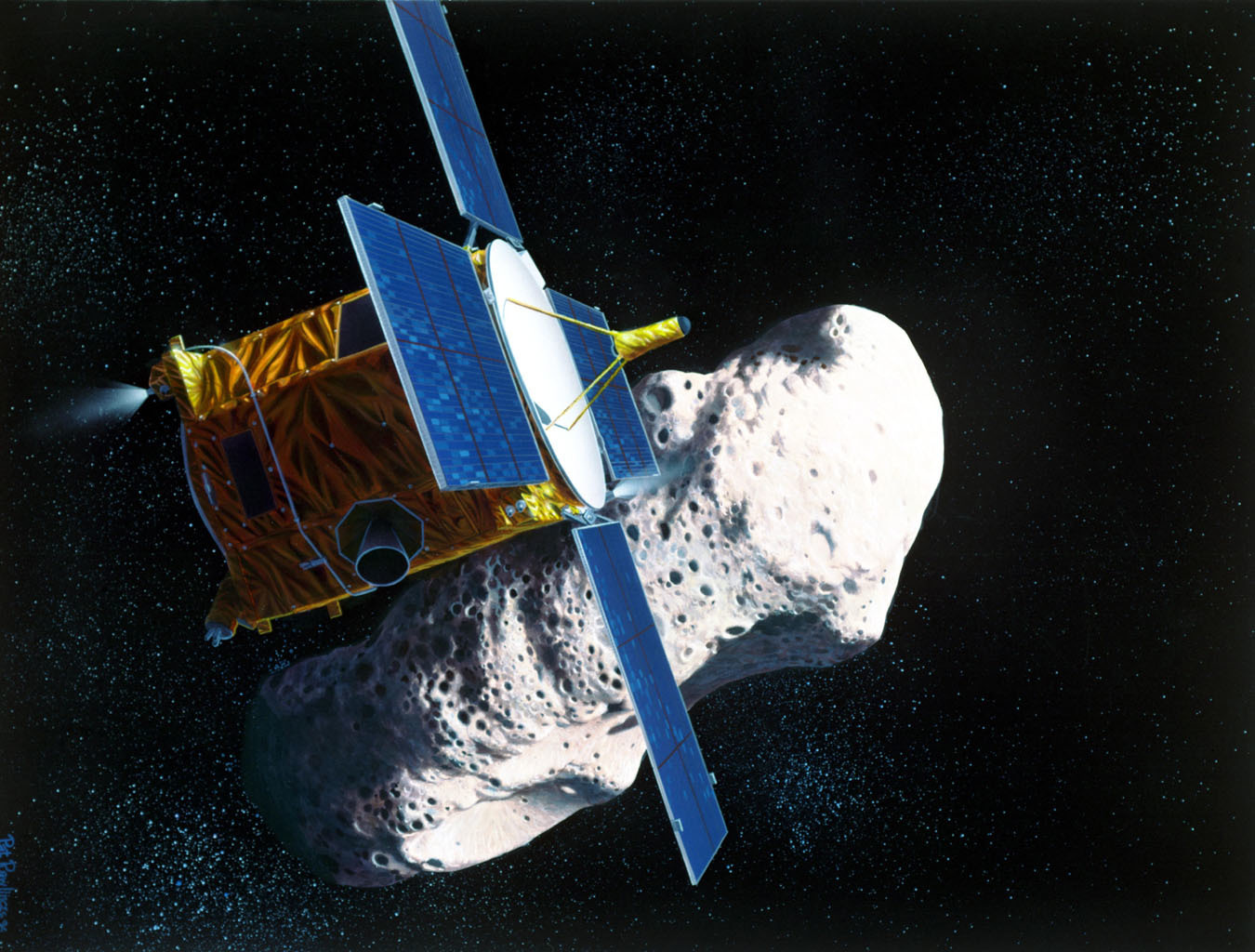FEBRUARY 17, 1930: A bright meteor appears in the sky above the midwestern U.S. and falls to the ground near Paragould, Arkansas. With a total mass of 370 kg, the Paragould meteorite, a stony chondrite, is the second-largest meteorite fall seen from and recovered in North America.
FEBRUARY 17, 1996: The Near-Earth Asteroid Rendezvous (NEAR) spacecraft – later renamed NEAR Shoemaker after renowned planetary geologist Eugene Shoemaker – is launched from Cape Canaveral, Florida. After passing by the main-belt asteroid (253) Mathilde in June 1997 and the near-Earth asteroid (433) Eros in late 1998, NEAR Shoemaker returned to Eros in February 2000 and went into orbit around it, and one year later successfully soft-landed onto Eros’ surface. The NEAR Shoemaker mission was covered in a previous “Special Topics” presentation.

FEBRUARY 18, 1930: Clyde Tombaugh at Lowell Observatory in Arizona discovers Pluto while examining photographs he had taken in late January. Pluto is the subject of a future “Special Topics” presentation.
FEBRUARY 18, 1948: A bright meteor appears over the midwestern U.S. and drops a large shower of meteorites over parts of Kansas and Nebraska. The Norton County meteorite, as this has been called, has a total mass of 1070 kg and is the largest meteorite fall seen from and recovered in North America.
FEBRUARY 18, 1991: Rob McNaught at Siding Spring Observatory in New South Wales discovers the apparent “asteroid” now known as (5335) Damocles. Damocles is traveling in an elongated Halley-type orbit (eccentricity 0.87, orbital period 41 years) and may be an extinct cometary nucleus. It is the first-known of the objects now called “Damocloids,” which are discussed in a future “Special Topics” presentation.
FEBRUARY 19, 1958: The large main-belt asteroid (3) Juno occults the 9th-magnitude star HD 32203 in Orion. This was the first predicted such event at which observations were attempted; a positive report was made from Sweden but seems to have been a false alarm. These events are discussed in a future “Special Topics” presentation.
FEBRUARY 21, 2019: JAXA’s Hayabusa2 spacecraft successfully collects soil samples from the near-Earth asteroid (162173) Ryugu, around which it was in orbit at the time. Hayabusa2 and similar missions will be the subject of a future “Special Topics” presentation.
FEBRUARY 21, 2019: Scott Sheppard, David Tholen, and Chad Trujillo announce their discovery of what appears to be the most distant observed object in the solar system. The object, nicknamed “FarFarOut,” was found in images taken in January 2018 with the Subaru Telescope in Hawaii, and appears to be located at an approximate heliocentric distance of 140 AU and perhaps is somewhere around 400 km in diameter. At this time there is no information available as to its orbit. Objects like this in the distant outer solar system are discussed in a future “Special Topics” presentation.
FEBRUARY 22, 1906: Max Wolf at Heidelberg Observatory in Germany discovers the asteroid now known as (588) Achilles, the first known “Jupiter Trojan” asteroid. Trojan asteroids are the subject of a future “Special Topics” presentation.
FEBRUARY 22, 2018: The main-belt asteroid (1165) Imprinetta occults the 10th-magnitude star BD -7d 3286 in Crater. Although most such events are used to determine characteristics of the occulting asteroid, in this case successful observations with the high-time-resolution VERITAS array in Arizona were used to determine physical characteristics of the occulted star, the first time that this was successfully accomplished. Stellar occultations by asteroids are the subject of a future “Special Topics” presentation.
FEBRUARY 22, 2020: The main-belt asteroid (97) Klotho will occult the 7th-magnitude star HD 30913 in Orion. The predicted path of the occultation crosses central India, Nepal (including Kathmandu), Tibet, China (including Tianjin and southern Beijing), northern North Korea, and the Japanese island of Hokkaido (including Sapporo).
More from Week 8:
Comet of the Week Special Topic Free PDF Download Glossary
Ice and Stone 2020 Home Page


